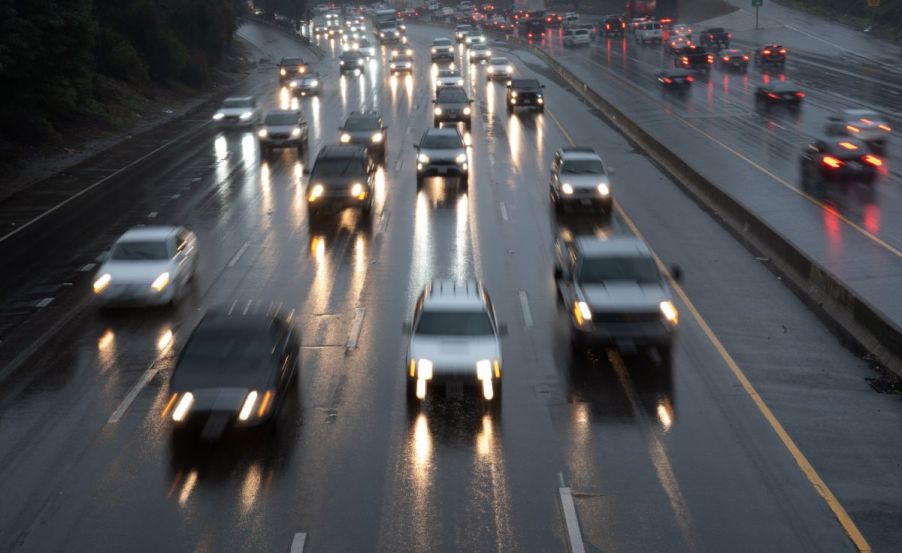
Is It Dangerous To Use Cruise Control In The Rain Or Snow?
Cruise control makes highway trips a breeze. By maintaining a constant speed, it lets you concentrate on the road and also helps reduce fatigue. It’s just nice to have.
On the other hand, rain and snow present unique driving challenges. With traction at a premium, wet or snowy conditions present car safety hazards and require focused driver inputs.
So, can you use cruise control in the rain or snow? Let’s find out.
How does cruise control work?
HowStuffWorks provides a clear explanation of cruise control’s function. The system varies throttle inputs to maintain an even speed, using an actuator instead of an accelerator. As that happens, the throttle valve opens or closes, controlling how much air enters the engine.
Using cruise control is a simple process. Once you reach the desired miles per hour, press the “set speed” button to maintain it. If you want to go faster, press the appropriate button for an extra one or two mph. Conversely, hit the indicated deceleration button to slow down a little bit.
While basic cruise control has been around for a while, modern cars have an even better version: adaptive cruise control (ACC). ACC sustains a set mph while keeping a set distance from vehicles ahead.
Today’s ACC systems use high-tech equipment like lasers, cameras, and radars to sense the surroundings and optimize safety. Besides maintaining speeds and following distances, modern adaptive cruise control can stop before traffic and slow down in curves.
How rain and snow affect cruise control operation
For all cruise control’s benefits, using it in rain or winter conditions isn’t a good idea. As a vehicle’s cruise control tries to sustain speed in inclement weather, tires may lose grip and cause an accident. So when raindrops fall or snow accumulates, human inputs are essential to avoid car accidents.
In the rain, using cruise control at higher mph can cause hydroplaning. Or, in snow and ice, vehicles may lose traction, resulting in a skid into another lane or a spin off the road. It could also result in a driver slamming on the brakes and getting rear-ended.
When it comes to driving in low-traction conditions, there’s nothing like human senses and inputs. When a driver’s foot is on the pedal, they can detect tire spin, lift-off, and apply the brakes. That could mean the difference between a collision and driving away safely. Even ACC systems have a weather warning and that snow and ice can obscure vehicle sensors.
Other reasons to avoid using cruise control
Cruise control is also best avoided in stop-and-go traffic, while around pedestrians, or when you’re feeling tired. Here’s why.
Drivers shouldn’t use cruise control around town. With constant stops and starts, traffic lights, and pedestrians, it’s wise for drivers to control every aspect of their car’s performance.
Or, when you’re feeling sleepy, it’s best to leave the cruise control turned off. Driving while tired isn’t a good idea in the first place, and a constant speed only adds to that. Cruise control encourages “passive” driving and decreases alertness.
And in city environments, with pedestrians crossing streets, it’s good to turn cruise control off. You need to be aware of the surroundings and monitoring speed, without computers doing the work. That can lead to quicker inputs when needed.
Cruise control is an essential feature of modern vehicles. Helping maintain a set miles per hour, this automatic system reduces fatigue on long highway trips. And adaptive cruise control enhances safety by maintaining a safe distance from surrounding vehicles.
But inclement weather, like rain or snow, presents challenges best handled by attentive driver inputs. So, in those cases, it’s best to leave cruise control turned off. Still, in dry conditions, this feature makes highway travel an easier experience.



